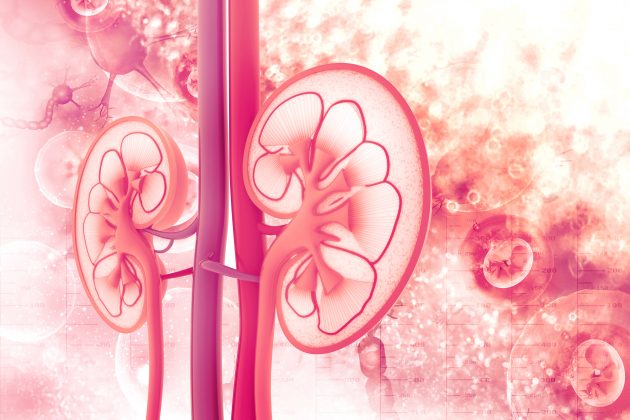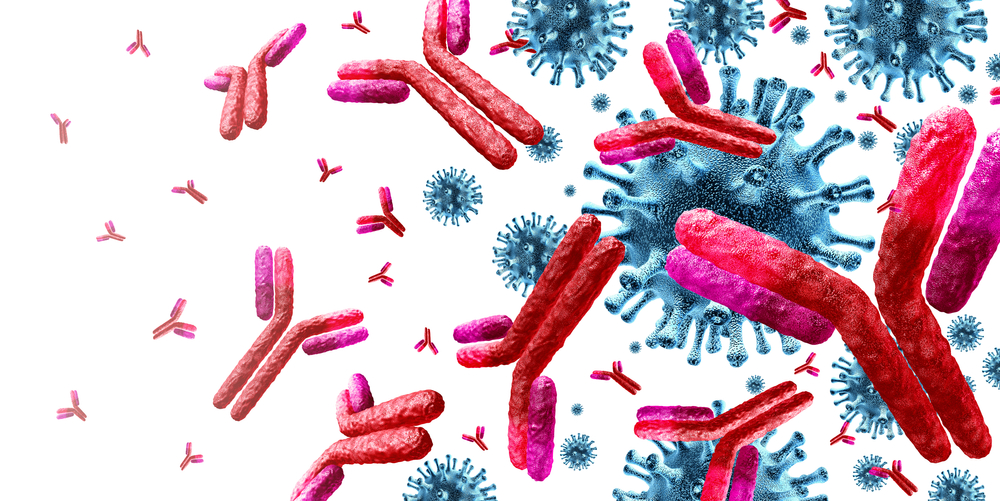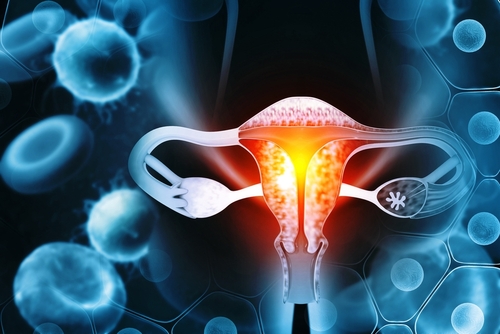The SARS-CoV-2 virus is responsible for COVID-19, a disease that, despite predominant respiratory manifestations, has a broad clinical spectrum, including asymptomatic infection, mild upper airways illness with fever, and severe pneumonia with respiratory failure. Patients may require admission to the intensive care unit (ICU) for acute respiratory distress syndrome or cytokine storm syndrome leading to multiple organ dysfunction. Older patients, as well as those with comorbidities, face risk of mortality.
Early reports of kidney involvement among patients with SARS-CoV-2 infection suggested that acute kidney failure was rare (<5%) in the entire infected population. However, the incidence of renal involvement is much higher (up to 65%) in patients with severe disease admitted to the ICU or with a fatal outcome. Results of a more recent retrospective study of 3993 patients with COVID-19 hospitalized in New York demonstrated that 46% of patients developed acute kidney injury (AKI) and 19% of patients with AKI required dialysis. A study conducted in China found that 43.9% of patients had proteinuria and 26.7% had hematuria on admission.
Alexandre Karras, MD, PhD, and colleagues conducted a single-center retrospective study designed to examine the prevalence of proteinuria among patients hospitalized with COVID-19 to describe the significance of proteinuria as a prognostic indicator of dialysis initiation, admission to the ICU, and death. Results of the study were reported in the Clinical Journal of the American Society of Nephrology [2021;16(4):514-521. doi.org/10.2215/CJN.09130620].
Proteinuria was expressed as urine protein-creatinine ratio (UPCR) and albuminuria as urine albumin-creatinine ratio (UACR). Tubular dysfunction was evaluated in a subset of patients by assessment of urine retinol binding protein-concentration, expressed as urine retinol binding protein-creatinine ratio. AKI was defined by the Kidney Disease Improving Global Outcomes (KDIGO) AKI criteria. The KDIGO criteria were applied using only serum creatinine variations.
Of 322 patients admitted to Hôpital Européen George Pompidou, Paris, France, by April 15, 2020, 122 were excluded due to lack of data on proteinuria or pre-existing kidney failure requiring long-term dialysis. The remaining 200 patients were included in the study.
Of the 200 patients, 143 were men, median age was 63 years, and 32 patients were >80 years of age. Data on body mass index (BMI) were available for 171 patients; median value was 26.7 kg/m2. Thirty-nine percent (n=66) had BMI between 25 and 30 kg/m2 and 26% (n=44) had a value above 30 kg/m2. Fifty-one percent of the cohort (n=103) reported a history of hypertension, and 25% (n=51) had a history of diabetes mellitus.
Eighteen patients had previously known chronic kidney disease; of those, seven were kidney transplant recipients. Thirty percent of the cohort (n=60) reported previous use of antihypertensive therapy with angiotensin-converting enzyme inhibitors (ACEi) or angiotensin II receptor blockers (ARBs); 21% (n=42) were receiving diuretics. Median delay between self-reported signs of viral infection and admission was 7 days.
At admission, median UPCR was 0.86 g/g. Proteinuria was <0.2 g/g in 24 patients, <0.5 g/g in 72 patients, between 0.5 and 1 g/g in 44 patients, between 1 and 3 g/g in 68 patients, and >3 g/g in 16 patients. Urine specimens were collected within 48 hours of admission; 45 patients had urine tests performed following the diagnosis of AKI made on the basis of serum creatinine elevation.
Only 152 patients had data on baseline UACR (76% of the overall study population). Median UACR was 0.11 g/g. Median UACR-UPCR ratio was 18%. For 8% of the patients, UACR-UPCR was above 50%.
Eighty-five patients had measurement of baseline urine retinol binding protein. All but two had UPCR and UACR measured on the same urine specimen. The urine retinol binding protein-creatinine ratio was below the detection threshold in 32 patients. For the 53 patients with detectable urine retinol binding protein, the median value of urine retinol binding protein-creatinine ratio was 1.35 mg/mmol. Of the 85 patients with available assessment of urine retinol binding protein, those with urine retinol binding protein-creatinine ratio above the detection threshold (≥0.03 mg/mmol) had higher levels of baseline proteinuria and slightly higher serum creatinine at admission.
Patients were categorized based on initial UPCR level (<1 vs ≥1 g/g). Those with UPCR ≥1 g/g were older, more likely to have hypertension, and more likely to receive ACEi or ARB. There was no difference between the two groups in the sex ratio, prevalence of diabetes, prevalence of CKD, or BMI level. High levels of proteinuria were seen in patients with or without history of diabetes or CKD.
At admission, median serum creatinine level was 0.94 mg/dL. Twenty-nine patients had initial serum creatinine >1.5 mg/dL at admission. Median peak serum creatinine was 1.19 mg/dL; 79 patients had at least one value >1.5 mg/dL during hospitalization.
Eighty-eight patients were diagnosed with AKI (28 presented stage 1, 24 stage 2, and 36 stage 3). Twenty-seven of those patients required kidney replacement therapy (KRT). During hospitalization, 118 patients were admitted to the ICU for severe pneumonia. At follow-up, 58 patients had died after a median delay of 10 days from admission; 142 were discharged with a median length of stay of 11 days from admission.
Data from long-term follow-up following hospitalization for COVID-19 were available for 135 of the 142 surviving patients. After a median follow-up period of 36 days, median serum creatinine was 0.82 mg/dL. Among the 10 surviving patients with last known serum creatinine >1.5 mg/dL, eight had pre-existing CKD.
There was an association between the presence of a UPCR ≥1 g/g and higher peak median serum creatinine (1.79 vs 1.06 mg/dL; P<.001). There was also an association between a UPCR ≥1 g/g and significant risk of AKI (odds ratio [OR], 3.61; 95% confidence interval [C], 2.02-6.58; P<.001), the need for KRT (OR, 4.87; 95% CI, 2.03-13.00; P<.001), the risk of admission to the ICU (OR, 3.55; 95% CI, 1.93-6.71; P<.001), and the occurrence of death during hospitalization (OR, 3.56; 95% CI, 1.90-6.84; P<.001) in unadjusted analysis. In analysis of only the patients with normal kidney function at admission, UPCR ≥1 g/g remained associated with ICU admission, subsequent AKI, need for KRT, and occurrence of death.
Study limitations cited by the authors were inclusion of patients with the most severe forms of COVID-19, missing clinical data , and limited data on urine retinol binding protein.
The researchers said, “In conclusion, this study reveals that COVID-19 is associated with early and frequent tubular proteinuria, which is associated with poor kidney outcome and higher mortality among patients with symptomatic COVID-19. The comprehension of the precise mechanisms underlying this tubular injury requires further investigations.”
Takeaway Points
- Researchers in France conducted a single-center retrospective study to examine the characteristic features of proteinuria in patients hospitalized with COVID-19 and its association with admission to the ICU, initiation of dialysis, and death.
- The cohort included 200 patients with available data. Urine protein-creatinine ratio (UPCR) at admission was ≥1 g/g for 84 of those patients.
- UPCR ≥1 g/g was associated with initiation of dialysis, admission to the ICU, and death (P<.001 for all).
Credit: Original article published here.










